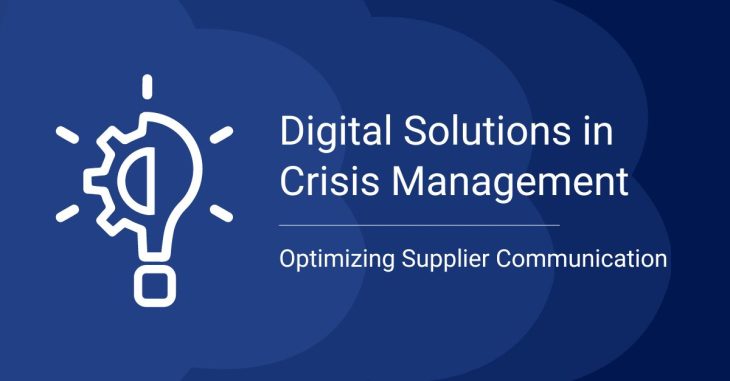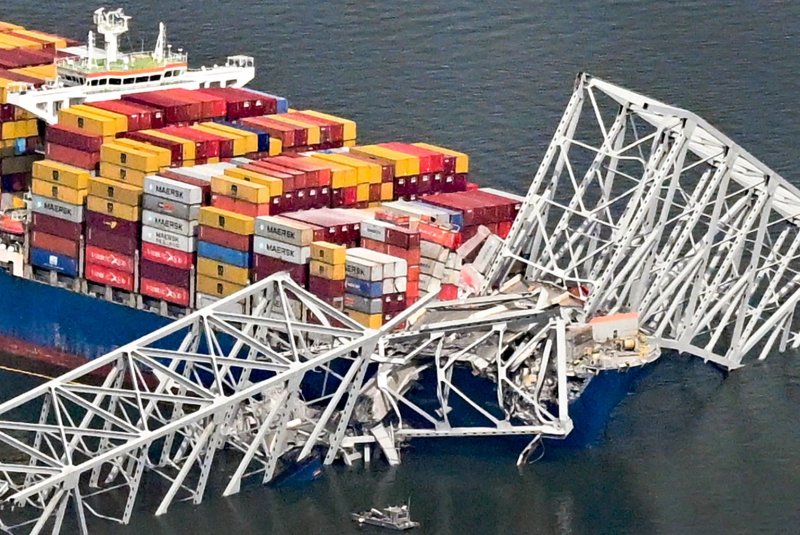Digital Solutions in Crisis Management: Optimizing Supplier Communication

In times of crisis, effective communication is important. Whether a natural disaster, pandemic, or, as recently seen, infrastructure failures like the Baltimore Bridge collapse. The ability to efficiently coordinate efforts can mean the difference between swift recovery and prolonged chaos. In such critical moments, the role of digital solutions in crisis management becomes increasingly evident, particularly in optimizing communication with suppliers.
The Baltimore Bridge collapse underscores infrastructure fragility and its ripple effects on communities, economies, and supply chains. When a bridge fails, it disrupts traffic and commerce, affecting businesses reliant on timely deliveries for operations.
The Baltimore Bridge Collapse: A Supply Chain Disruption
The Francis Scott Key Bridge suffered a partial collapse after a cargo ship struck one of its pillars. The incident has far-reaching implications for supply chains, particularly in the following areas:
- Automobile Shipments: Baltimore is the top port in the United States for automobile shipments. In 2022, it imported and exported over 750,000 vehicles, including brands like Mazda and Mercedes-Benz. While most of these autos are currently in inventory on U.S. dealer lots, any prolonged disruption could impact supply.
- Construction Machinery and Coal: The bridge collapse affects the movement of construction machinery and coal. These commodities are essential for various industries, including construction, manufacturing, and energy production.
- Tangled Supply Chains: The suspension of vessel traffic disrupts the flow of goods, affecting Baltimore and other ports along the East Coast. Companies relying on Baltimore as a logistics hub face challenges in moving their products efficiently.

Digital Solutions for Crisis Management
To mitigate such disruptions, companies can leverage digital solutions to optimize supplier communication during crises:
- Real-Time Visibility: Implement supply chain visibility tools that provide real-time updates on inventory levels, shipments, and potential disruptions. These insights enable proactive decision-making and risk mitigation.
- Collaborative Platforms: Use digital platforms to foster collaboration between suppliers, manufacturers, and distributors. Effective communication ensures everyone is aligned, reducing misunderstandings and delays.
- Automated Alerts: Set up automated alerts for critical events. Whether it’s a bridge collapse or a weather-related delay, timely notifications allow companies to adjust their plans and minimize the impact.
- Data Analytics: Leverage data analytics to identify vulnerabilities in the supply chain. Predictive models can assess risks and recommend alternative routes or suppliers.
By embracing digital solutions and optimizing supplier communication, companies can enhance their resilience and minimize the impact of disruptions. Digital solutions can also facilitate transparency and accountability in crisis management efforts. Remember, supply chains are interconnected, and collaboration is key to ensuring goods continue to flow even in challenging times. By documenting communication exchanges and keeping a record of decision-making processes, organizations can learn from past experiences. They can then improve their response strategies for future crises.
How Rhythm can help:
Rhythm Innovations’ supply chain management software empowers organizations to maintain real-time visibility into their supply chains. It acts as a conductor guiding a collaboration of suppliers, manufacturers, and distributors. This software helps businesses anticipate disruptions, enabling proactive risk mitigation and seamless operations.
After the Baltimore Bridge collapse, Rhythm Innovations’ software could have helped affected businesses manage disruption. By offering instant insight into inventory and delivery effects, organizations could quickly coordinate with suppliers for smooth supply chain operation.
Learn more about the Logistics after the Baltimore Bridge Collapse: Logistics scramble after bridge collapse closes Port of Baltimore (cnbc.com)


